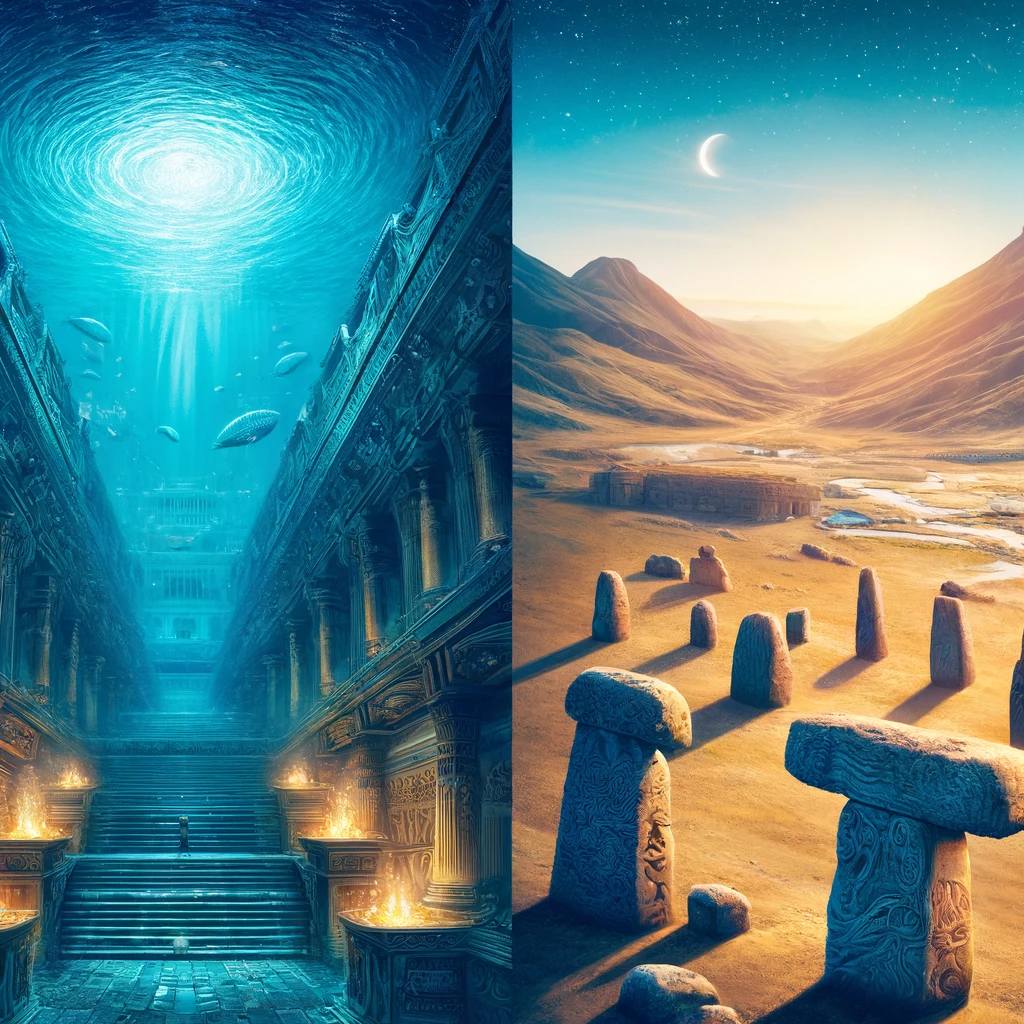Introduction: The Allure of Lost Worlds
From Plato’s sunken Atlantis to the towering pillars of Göbekli Tepe, humanity has long been captivated by civilizations that vanished into myth and mystery. These enigmatic tales and archaeological wonders challenge our understanding of history, technology, and human ingenuity. This article delves into Atlantis’s enduring legends and Göbekli Tepe’s revolutionary discoveries, bridging ancient lore and cutting-edge science.
Part 1: Atlantis—Myth or Lost Reality?
Plato’s Allegory: The Original Atlantis Narrative
In 360 BCE, Plato described Atlantis in Timaeus and Critias as a wealthy, advanced island nation that sank into the ocean after defying the gods. Key elements:
- Location: Allegedly beyond the “Pillars of Hercules” (Strait of Gibraltar).
- Technology: Sophisticated architecture, irrigation, and naval power.
- Downfall: Moral decay triggered earthquakes and floods, erasing Atlantis forever.
Theories and Searches for Atlantis
- Santorini Hypothesis: Linked to the Minoan eruption (~1600 BCE) that devastated Thera.
- Richat Structure: Some propose Mauritania’s “Eye of Africa” as Atlantis’s circular city.
- Azores Plateau: Underwater geological formations spark speculation.
- Critics’ View: Most scholars deem Atlantis a philosophical allegory about hubris, not history.
Why Atlantis Endures
- Cultural Impact: Inspires films, books, and pseudoarchaeology (e.g., Aquaman, Indiana Jones).
- Symbolism: Represents humanity’s fear of ecological collapse and lost golden ages.
Part 2: Göbekli Tepe—Rewriting Human History
Discovery of a 12,000-Year-Old Enigma
Unearthed in 1994 in Turkey, Göbekli Tepe predates Stonehenge by 6,000 years and challenges assumptions about early human societies:
- Architecture: 20 circular enclosures with 16-ton T-shaped pillars carved with animals (lions, scorpions, vultures).
- Purpose: Likely a ritual or communal site—not a settlement—used for ceremonies or astronomical observation.
- Builders: Hunter-gatherers, not agriculturalists, defying the “agriculture-first” model of societal development.
Key Mysteries of Göbekli Tepe
- Advanced Engineering: How did prehistoric societies quarry and transport massive stones?
- Symbolic Art: Animal carvings may represent totems, star maps, or shamanic rituals.
- Intentional Burial: The site was deliberately buried in 8000 BCE—why?
Implications for Human Development
- Timeline Shift: Suggests organized religion and complex social structures emerged before farming.
- Cultural Memory: Could Göbekli Tepe’s collapse have inspired later flood myths like Atlantis?
Part 3: Bridging Myth and Science
Modern Lessons from Lost Civilizations
- Atlantis: Warns of environmental neglect and societal arrogance.
- Göbekli Tepe: Proves human innovation thrives even in early eras, reshaping views of prehistoric ingenuity.
Conclusion: The Quest for Hidden Truths
Atlantis and Göbekli Tepe represent two sides of humanity’s quest to understand its past—one shrouded in myth, the other unearthed by science. While Atlantis fuels imagination, Göbekli Tepe offers tangible proof that history’s deepest secrets still lie buried, waiting to redefine our story.


